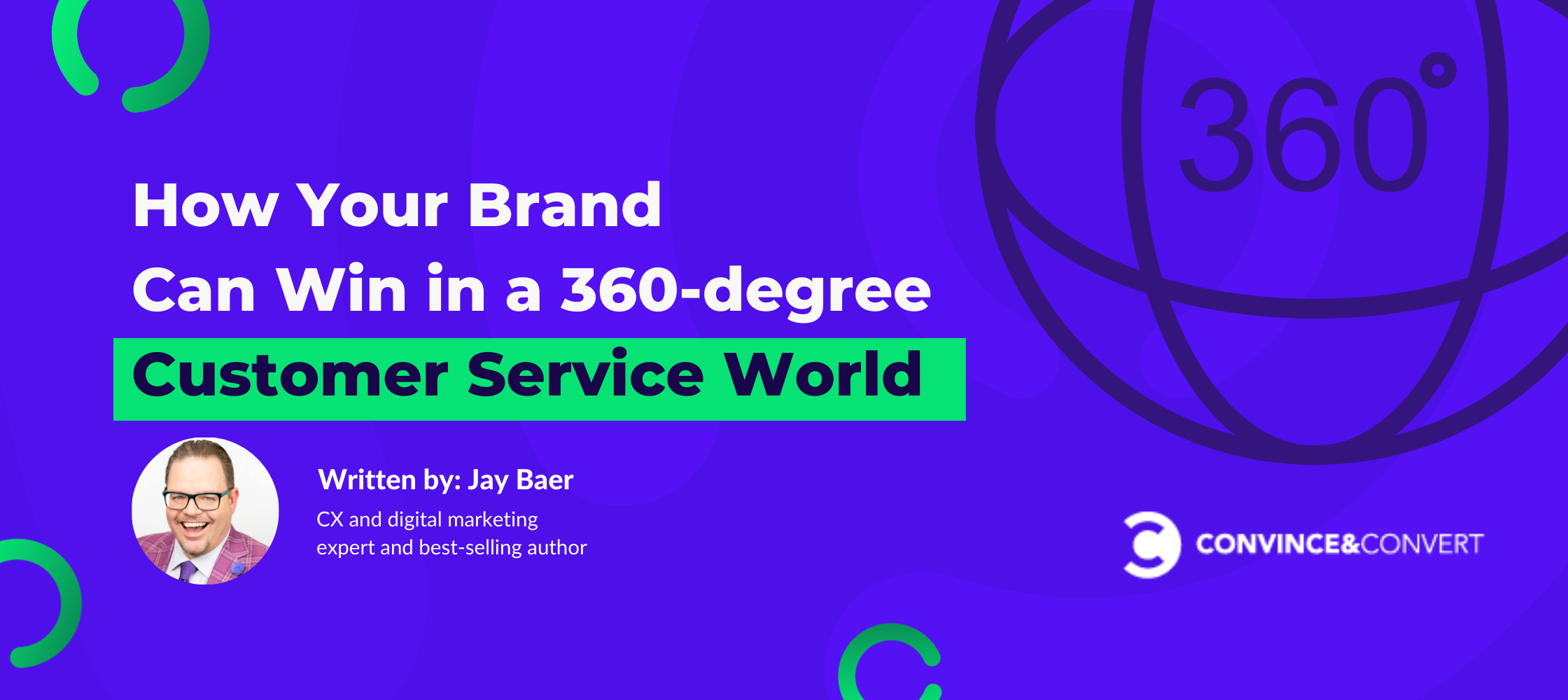 My customers, your customers, all customers have been through a lot. It’s been a crazy couple years—and that’s probably an understatement.
And it turns out, when EVERYTHING has been hard, customers crave EASY.
Today, customer service may be a more important competitive differentiator than at any time in modern business history.
Customer expectations for service continue to escalate, and the labor shortages and supply change issues wrought by the pandemic are no longer valid rationales for providing anything less than top-notch customer care.
In fact, my new research report on consumer patience – The Time to Win – found that 83% of consumers expect businesses to be as fast (or faster) to respond than they were before the pandemic. Yikes.
Despite these heightened customer expectations, businesses continue to disappoint those same customers. Astonishingly, the American Customer Satisfaction Index, which gauges overall consumer sentiment around service quality, is the lowest it has been at any point since 2005!
You may think all of this is bad news. But it’s quite the opposite.
I’ve been a digital marketing and customer experience strategist for 29 years, and I’ll pass along to you a simple, yet important, truth that I’ve witnessed in many business cycles: the more disappointed customers are in aggregate, the easier it is for a specific brand to delight and differentiate.
My recent research spotlighted the correlation between customer service and desirable business outcomes. The Time to Win study found that 3 in 10 customers are more likely to spend money, when a business responds to them faster than they expect.
The converse is also true: 5 in 10 customers are LESS likely to spend money when a business takes longer to respond than they expect.
So here’s the reality: customers expect more from brands than ever. Those expectations are rarely met. Exceeding those expectations can have a meaningful impact on revenue.
I want you to elevate above your competition. I want you to successfully use customer care as a fulcrum that separates your brand from similar providers. Here’s how:
My customers, your customers, all customers have been through a lot. It’s been a crazy couple years—and that’s probably an understatement.
And it turns out, when EVERYTHING has been hard, customers crave EASY.
Today, customer service may be a more important competitive differentiator than at any time in modern business history.
Customer expectations for service continue to escalate, and the labor shortages and supply change issues wrought by the pandemic are no longer valid rationales for providing anything less than top-notch customer care.
In fact, my new research report on consumer patience – The Time to Win – found that 83% of consumers expect businesses to be as fast (or faster) to respond than they were before the pandemic. Yikes.
Despite these heightened customer expectations, businesses continue to disappoint those same customers. Astonishingly, the American Customer Satisfaction Index, which gauges overall consumer sentiment around service quality, is the lowest it has been at any point since 2005!
You may think all of this is bad news. But it’s quite the opposite.
I’ve been a digital marketing and customer experience strategist for 29 years, and I’ll pass along to you a simple, yet important, truth that I’ve witnessed in many business cycles: the more disappointed customers are in aggregate, the easier it is for a specific brand to delight and differentiate.
My recent research spotlighted the correlation between customer service and desirable business outcomes. The Time to Win study found that 3 in 10 customers are more likely to spend money, when a business responds to them faster than they expect.
The converse is also true: 5 in 10 customers are LESS likely to spend money when a business takes longer to respond than they expect.
So here’s the reality: customers expect more from brands than ever. Those expectations are rarely met. Exceeding those expectations can have a meaningful impact on revenue.
I want you to elevate above your competition. I want you to successfully use customer care as a fulcrum that separates your brand from similar providers. Here’s how:
How Brands Can Win at 360-degree Customer Service
✍ Jay Baer
Our social media experts are ready to supercharge your social platforms. Click the get started button to learn more.
Get Started